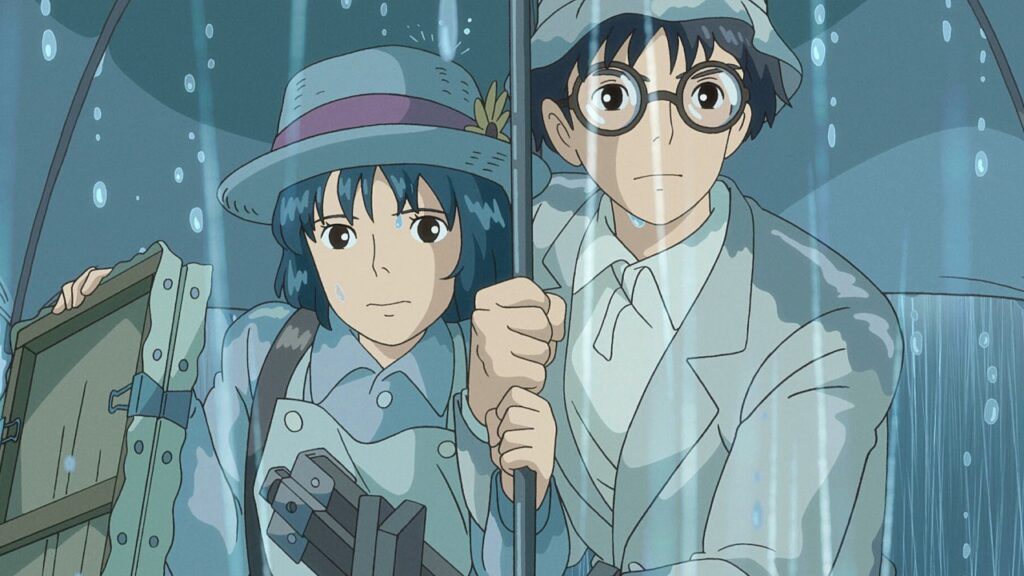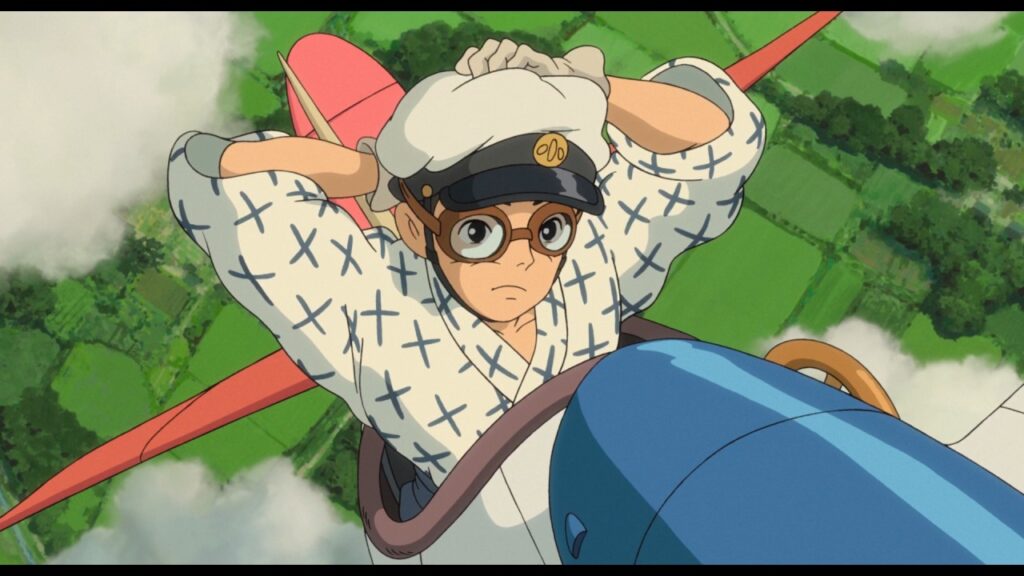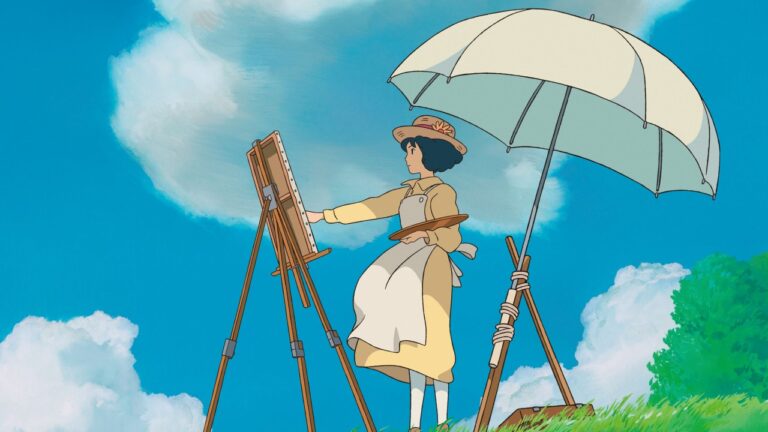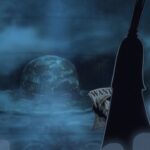Hayao Miyazaki’s The Wind Rises (2013) stands as one of Studio Ghibli’s most unusual works. Unlike the fantastical journeys of Spirited Away or My Neighbor Totoro, this film unfolds in the real world, drawing inspiration from the life of Jirō Horikoshi, who was a Japanese engineer behind the Mitsubishi A6M Zero fighter, and this story balances between historical fact and lyrical imagination, reflecting both the brilliance and the burdens of creating something extraordinary in difficult times.
This Ghibli Studio film follows Jirō from childhood into adulthood. Early on, his fascination with flight is sparked by dreams of Italian aeronautical pioneer Giovanni Caproni, who becomes a guiding presence in his imagination. These dream sequences are not escapes but conversations as well as visions that keep alive Jirō’s belief that beauty can be found even in machines of war.
Dreams, Duty, and Desire: Jirō’s Journey Through Innovation and Uncertainty

At the center is Jirō, who has been enchanted by airplanes, but his poor eyesight bars him from flying; however, he finds another way into the skies by becoming an aeronautical engineer and designing them. Jirō is defined by his quiet determination and his ability to focus on the elegance of flight even as the world around him grows restless. His dreams of graceful machines are shadowed by the reality that his creations will serve in war. Through him, Miyazaki explores the double edge of ambition and how the pursuit of beauty can be entangled with destruction.
In early 20th-century Japan, Jirō’s life unfolds during years of upheaval. The Great Kanto Earthquake of 1923 tears through Tokyo, leaving behind destruction that reshapes the country’s spirit. Economic struggles follow, and a growing wave of militarization begins to dominate national priorities, and these forces press in on Jirō’s career, shaping the direction of his work even as his own ambitions.
Amid these pressures, another side of his life offers something gentler, as his relationship with Nahoko, whom he met during the Kanto Earthquake, suffers from tuberculosis, and brings warmth to an otherwise heavy story. Their love grows not through grand gestures but through quiet companionship, including moments of sketching together, laughter shared in silence, and an unspoken recognition of how little time they might have. Her presence softens the weight of history pressing on Jirō, reminding us that even during times of conflict and uncertainty, human connection becomes a form of survival.
Miyazaki is known for weaving themes of humanity and nature, but he takes a different route here. The Wind Rises confronts the dual nature of dreams and how creation can be both beautiful and destructive. The aircraft Jirō designs are marvels of engineering, yet they will be used in war. The film refuses to judge him directly, instead allowing the audience to sit with the unease of admiration and moral weight.
Hayao Miyazaki’s Reflection on Dreams, Loss, and the Passage of Time

The animation style carries the unmistakable Ghibli touch of hand-drawn details, landscapes that are filled with motion, and soundscapes where even wind becomes a character. Subtle choices, of the way clouds drift, and the stillness between Jirō and Nahoko’s unforgivable departure.
Miyazaki apparently retired after this project (though he later returned with The Boy and the Heron), making The Wind Rises feel like a parting reflection. Rather than building toward a dramatic climax, the film moves with quiet contemplation, as it considers the price of chasing one’s dreams, the compromises life and history demand, and the delicate, fleeting nature of love. Jirō’s achievements are tinged with both pride and sorrow, reminding us that even success carries a shadow. The closing acknowledges the complexity of life, with the mixture of hope, loss, and endurance. It resonates with the line that inspired the title: “The wind is rising! We must try to live,” which is a gentle reminder that living fully requires both courage and acceptance.




